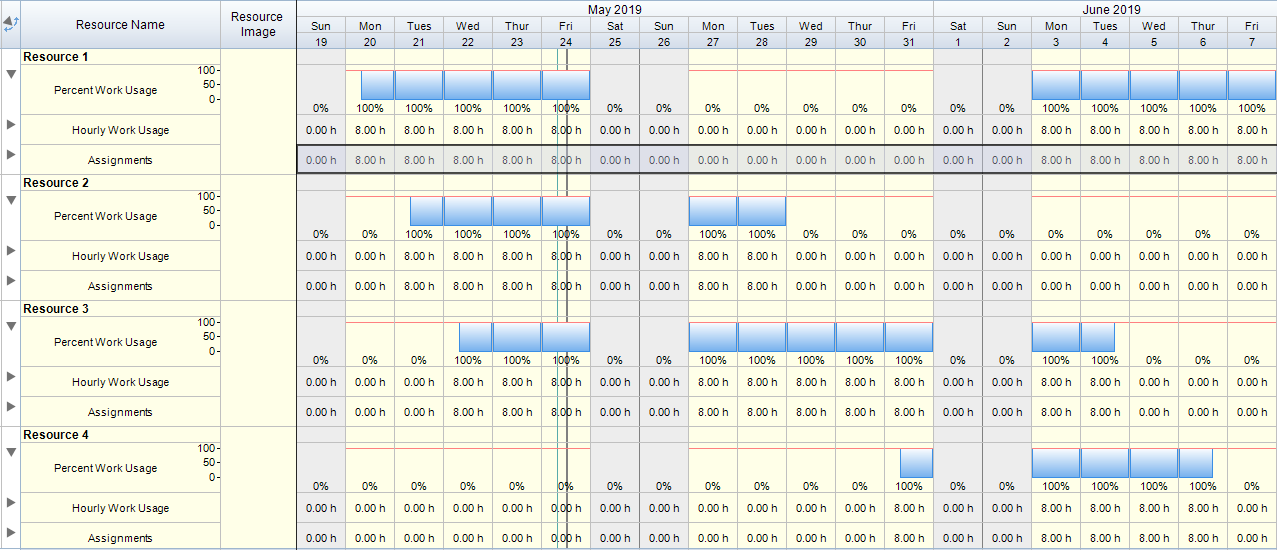From a lack of communication to overall unfavorable work circumstances, projects can fail if managers do not put not enough planning into their execution. A project manager who is entirely in possession of all the necessary information will be more effective at “acquiring, managing, motivating, and empowering the project team,” countering all the determinants, which may work against them (Project Management Institute, 2017, p. 309). Thus, utilizing project management and scheduling tools, which exist and are easily accessible in the 21st century, may help facilitate the planning mechanism, which is essential to project execution. Recognizing these software techniques and resources, as well as securing their inheritability for the future benefit of other teams, is a vital part of creating a positive and productive work environment. The proper implementation of such tools may even help to counter circumstances that are outside the team’s or even the company’s scope.
The Main Reasons for Project Delay and Ways to Counteract Them
The delay of projects relies on both internal and external circumstances. Contractor tardiness, client-end setbacks, changes conveyed from upper management, and even climate can affect the maturity of a project, with circumstances often layering to create concurrent delays (Mubarak, 2015). However, the main reason behind project setbacks is a lack of proper planning, due to incomprehensive analyses or managers not taking into account what-if situations, designed to demonstrate the failure-susceptible areas of a project (Project Management Institute, 2017). Therefore, time management becomes a unique skill that may be taught, with the Project Management Institute providing a wide variety of educative literature on the topic (n.d.). Another essential aspect of proper project execution is the correct allocation of resources, based on realistic expectations and goals, without which the team may be working inefficiently (Project Management Institute, 2017). Thus, proper project-planning techniques may mitigate the main reasons behind setbacks, recognize critical activities, and secure the indispensable teamwork spirit.
A client needs analysis is essential to achieve proper project maturity through this kind of effective planning, recognizing not only possible setbacks but also the goals of various customers. Assuring the consumer of both the team’s reliability and integrity through the creation of a needs-reflective plan, as “a road map to delivering a quality product or service,” is an essential part of project management (Kerzner, 2017, p. 706). Therefore, understanding the customer’s needs is central to creating a plan to address them, as projects are seldom standalone and instead are supposed to resolve a real issue (Project Management Institute, 2017). Unsatisfied stakeholders are one of the main reasons of company failure, and a client needs analysis must aim to discern clients’ motivation behind the project, their resources, and end goal (Milosevic & Martinelli, 2016). Effective project planning should imperatively reflect all wants of the customer to produce a satisfactory level of work.
The Usefulness of Project Management Software
Modern-day technologies may not only help perfect the project-planning period of any undertaking but also allow counteracting some of the disadvantages of paper-only methods. Fast-tracking and resource optimization through smoothing or leveling are the two main methods of potentially improving project scheduling, but which retain executive drawbacks, such as the need to monitor the critical path continuously (Project Management Institute, 2017). For example, the software FastTrack Schedule 10 allows handling of not only activity duration but also start and end times, and the critical path, as seen in Figure 1 and Figure 2. In Figure 3, it is possible to see that the application also allows the optimization of resources through their assignment and reassignment, with either a variable or fixed project end-date. These skills are all essential for smoothing and leveling, as well as fast-tracking techniques, to control all aspects required for the project adequately.



FastTrack Schedule 10 also helps manage its realization throughout all the stages of a project’s life cycle:
- Initiation: helps judge the practicality of the project’s execution with the accessible resources, as seen in Figure 4;
- Planning: allows determining resource availability, as seen in previous illustrations, and helps visualize the project’s budget, as seen in Figure 5;
- Execution: permits creating tasks and sub-tasks, as seen in Figure 6;
- Closure: assists in analyzing goals through the provision of achieved statistics, as seen in Figure 7.
Thus, FastTrack Schedule 10 may augment all aspects of the project life cycle, mainly because of its easy-to-apperceive layout, helpful tools, and share-ability between various teams.




Inheriting Knowledge and Lessons from Previous Projects
The creation of a practical legacy is pivotal to success within various industries. Re-using existing templates is one way of achieving transferability of knowledge, but not the most efficient one (Milosevic & Martinelli, 2016). Reviews, seminars, conferences, and other knowledge management practices secure inheritability of essential information, which may then be used to create even more advanced methods of project management (Project Management Institute, 2017). As a figure who is in charge of codifying essential knowledge during the project’s lifespan, the project manager is demonstrative of the credibility of the company (Milosevic & Martinelli, 2016). Thus, the creation of a “project management office (PMO),” which acts out both supportive and directive roles, makes sure that knowledge is passed on from team to team and useful techniques are preserved (Project Management Institute, 2017, p. 48). Teams successfully sharing the skills acquired from previous projects secures the advancement of companies, as it decreases the time spent to find already discovered solutions to recurring problems.
Biggest Challenge in Project Scheduling
Project scheduling remains a demanding action, which circumstances both within and without the company always affect. Of the possible influencing circumstances, changing regulations by the authorities may be one of the biggest challenges to proper planning, as the company and the project team could be forced unexpectedly into unforeseen working conditions. Since “outputs need to comply with all applicable standards, requirements, regulations, and specifications,” legislative changes overrule all non-compliant plans and necessitate reworking the scheduling plan to appease new criteria (Project Management Institute, 2017, p. 298). While contractors may be negotiated with, government-instituted laws are imperative and inviolable. Thus, “government regulations” become a potential and particular environmental risk in project planning, which companies and their teams must anticipate and consider when drafting schedules that aspire to be realistic (Milosevic & Martinelli, 2016, p. 388). Thus, overcoming the biggest challenge in project schedule drafting is not impossible but requires foresight and extensive knowledgeability of the current legislative climate in the industry of interest.
Conclusion
While there is no replacement for a good project manager, using tools that help achieve better results is an indispensable part of creating stellar projects. The proposed FastTrack Schedule 10 software allows creating a plan that is easy to share and follow, which may be made easily accessible to both clients and team members. It also facilitates finding and identifying factors that may potentially delay work at any stage, in addition to tracing the relevance of the project to the end goals of the client. Furthermore, re-utilizing the created templates and holding seminars on how to perfect their use is an ideal way of making sure that these lessons remain preserved and built upon by future project managers. Therefore, as a tool, FastTrack Schedule 10 plays the role of both an organizer and a problem-finder, as it helps team members and executives visualize the workflow and compare their achievements against a preset rubric.
References
Kerzner, H. (2017). Project management: A systems approach to planning, scheduling, and controlling (12th ed.). Hoboken, NJ: John Wiley & Sons.
Milosevic, D. Z., & Martinelli, R. J. (2016). Project management toolbox: Tools and techniques for the practicing project manager (2nd ed.). Hoboken, NJ: John Wiley & Sons.
Mubarak, S. A. (2015). Construction project scheduling and control (3rd ed.). Hoboken, NJ: John Wiley & Sons.
Project Management Institute. (2017). A guide to the project management body of knowledge (PMBOK guide) (6th ed.). Newtown Square, PA: Project Management Institute.
Project Management Institute. (n.d.). Time management. Web.